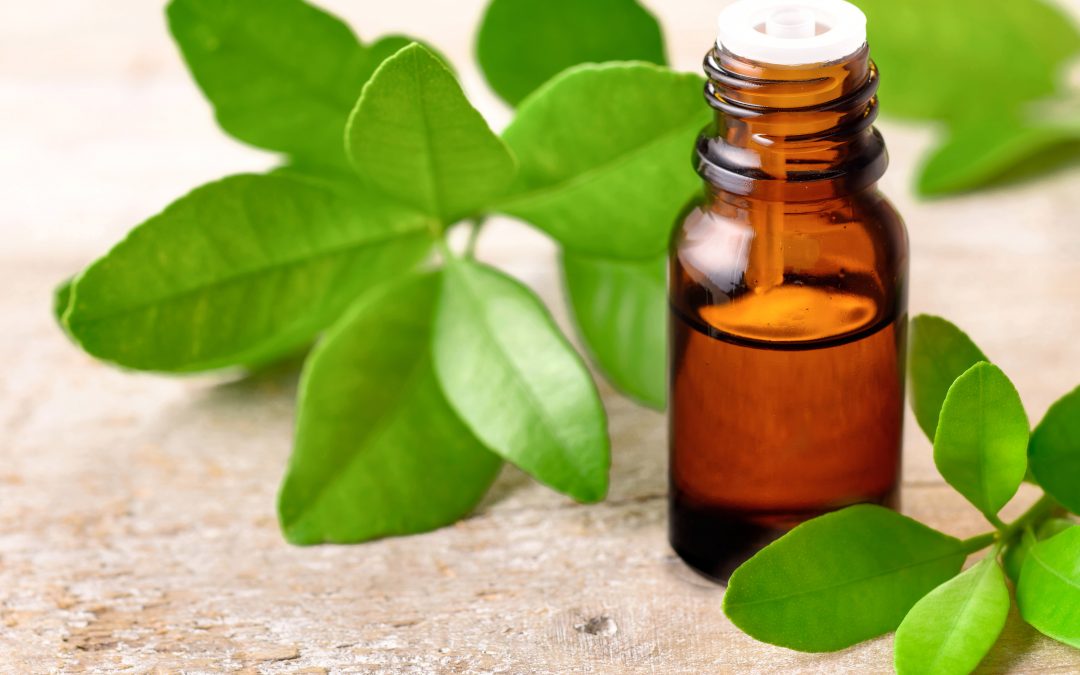Petitgrain
Botanical Name: Citrus aurantium var amara or bigardia
Aroma: Sweet and light floral aroma (Not as in your face as Neroli essential oil)
Plant Parts Used: Leaves and twigs
Method of Extraction: Steam distillation
Precautions: There are no known safety considerations for this essential oil.
Blends Well with Top 5 for Emotional Wellness: Bergamot, Lavender, Roman Chamomile, Sweet orange, and Ylang Ylang.
Aroma Mantra: With every breath, I am calming my mind
Historical Use
Historical use of the plant points us to cultures in South American and China using the leaves of the bitter orange to treat cold and flu and help with digestive complaints such as indigestion and nausea (1).
Petitgrain essential oil is used extensively in perfumery, but there are quite a few benefits to the oil, I will cover those for emotional wellness here.
What Do the Studies Tell Us?
In a study published in 2017 in the Journal of Alternative and Complementary Medicine, Petitgrain essential oil improved the mental and emotional conditions of the participants (2). Petitgrain essential oil was inhaled through diffusers while participants worked on their computers. The oil improved performance and reduced stress levels. This action was due to the constituents’ linalyl acetate, linalool, and myrcene.
Emotional Wellness
Reach for Petitgrain essential oil for a multitude of stress-related concerns and has a great ability to sooth and quiet the mind. Do you struggle with worry, overanalyzing or anxiety? When you lay down at the end of the night to sleep does your mind take you away to all of the worries in your life? If so, you owe it to yourself to try this sweet little oil. Petitgrain is the first oil I reach for when my oldest is having issues falling asleep because he cannot stop his thoughts or get a song out of his head and is feeling frustrated.
Petitgrain has an affinity for the central nervous system, therefore, when it is inhaled your pulse slows, breathing settles, and the body reverts to the parasympathetic nervous system, rest and restore mode. Place it in your diffuser before you lay down at night. Put some in an aromatherapy inhaler when you need to focus. Petitgrain essential oil is definitely your ally here.
What Other Professionals Say
According to long-standing aromatherapist Patricia Davis, “Where Neroli evokes the highest psychic or spiritual levels of mind, Petitgrain relates more to the conscious, intellectual mind. Inhale this oil when you need mental clarity (3).”
Kurt Schnaubelt states that “Petitgrain essential oil is non-toxic and can be used liberally in preparations used to address stress and imbalance of the autonomic nervous system (4).”
Julia Lawless recommends blending with Petitgrain bigarade for the psyche for stress, tension, anxiety, and low mood (5).
Now Try This
Ready to try this oil in practice? The following blend is from my book, Aromatherapy for Kids book, but is effective for all ages (6).
Antsy Pantsy (Master Blend)
Mandarin Red 15 drops
Lavender 10 drops
Petitgrain 5 drops
Cedarwood 5 drops
You can utilize this master blend properly diluted in an inhaler, diffuser, or in an aroma bath. Store unused portions in a cool spot.
Please note that I am not a medical practitioner. The content of this website is provided for general informational purposes only and is not intended as, nor should it be considered a substitute for, professional medical advice. Do not use the information on this website for diagnosing or treating any medical or health condition. If you have or suspect you have a medical problem, promptly contact your professional healthcare provider. By using this website, you assume full responsibility and liability for your own actions.
References
(1) Decleor, Paris. Petitgrain Essential Oil. Retrieved from https://www.decleor.co.uk/blogs/petitgrain.html
(2) Huang, L., & Capdevila, L. (2017). Aromatherapy Improves Work Performance Through Balancing the Autonomic Nervous System. The Journal of Alternative and Complementary Medicine, 23(3), 214–221. doi: 10.1089/acm.2016.0061
(3) Davis, Patricia. (1996) Subtle Aromatherapy. Saffron Walden: C.W. Daniel
(4) Schnaubelt, K. (2011). The healing intelligence of essential oils: the science of advanced aromatherapy. Rochester, VT: Healing Arts Press.
(5) Rhind, J. (2016). Aromatherapeutic blending: essential oils in synergy. London: Singing Dragon.
(6) Moldenauer, L. (2017). Aromatherapy for Kids: Safe and Sound. CreateSpace Independent Publishing Platform
Want to learn more about essential oils for our Emotional Wellness? Grab my latest bestselling book here-Emotional Healing with Essential Oils: Relieve Anxiety, Stress, Depression, and Mood Imbalances Naturally




